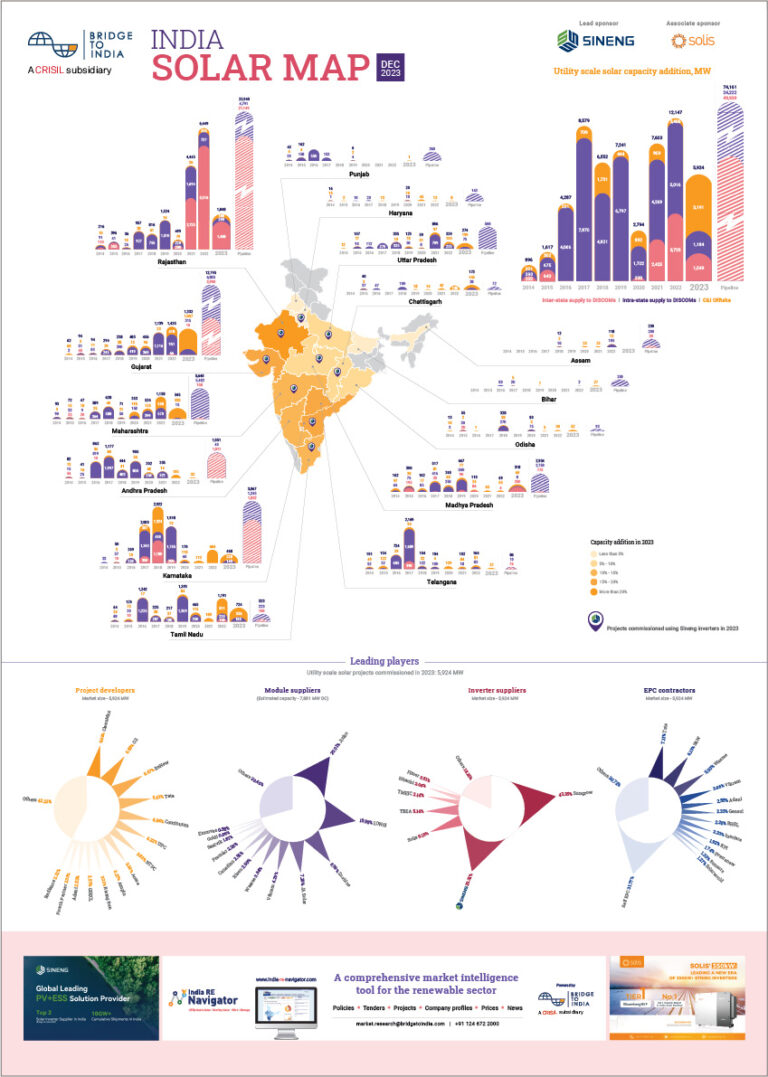Mr. Akhilesh Magal heads the Project Development team as a Senior Consultant at BRIDGE TO INDIA.
The Central government’s decision to bail-out the state electricity boards to a tune of INR 1,900b does not come as a surprise. The power sector in India is on the brink of collapse. However, bailing out the bankrupt electricity boards is not a sustainable solution. Key fundamentals of the market must be corrected.
- Equal pricing of power across consumer segments: politicians pander to the vote-bank politics by giving away power for free to farmers. In most case there is no power to be given away for free. Gujarat has shown that by enabling consumer choice, farmers automatically gravitate towards the more reliable (albeit expensive) source of power (See link).
- Transmission and distributions losses: the distribution and transmission companies have no incentive in promoting energy efficiency. Neither do they have the money to upgrade their equipment nor do they have the will to prevent thefts. Gujarat again is a leading example where complete deregulation of the power sector has resulted in much more efficient networks. Post-reform, the losses dropped to 20% from a previously high 35% (See article)
The current state of the state electricity boards also does not bode well for the development of renewable energy. Solar energy in particular is one of the most expensive forms of renewable energy. The average cost of solar is between INR 7 to 8 per unit which is significantly higher than the cost of energy from coal (~INR 2 per unit). The boards are resistant to purchase expensive power, when they can get much cheaper thermal power. This resistance is apparent from the hesitancy to meet the Renewable Purchase Obligations (RPO). The RPOs are mandated from by the Central Electricity Regulatory Commission (CERC) on captive consumers, distribution companies and open access consumers. These obligations require a certain share of renewable energy in the overall energy mix. However, data suggests that the RPOs are being poorly implemented and no penalty is currently being enforced on the obligated entities.
This seriously jeopardizes the solar market since the market is poised to move away from the subsidies under the National Solar Mission (NSM) and various state policies to market driven mechanisms such as the Renewable Energy Certificate (REC) mechanism. The current financial state of the power sector in India is the biggest barrier for this transition.
It remains to be seen if the central government is willing to go the extra mile and actually implement the deregulation of the power sector which started in 2003. The timing for these reforms could not be better. The government has a small window of opportunity to slip these reforms through – along with a host of other reforms it recently introduced. National elections in 2014 means that the government will not risk taking this decision in or after 2013. It’s now or never.












